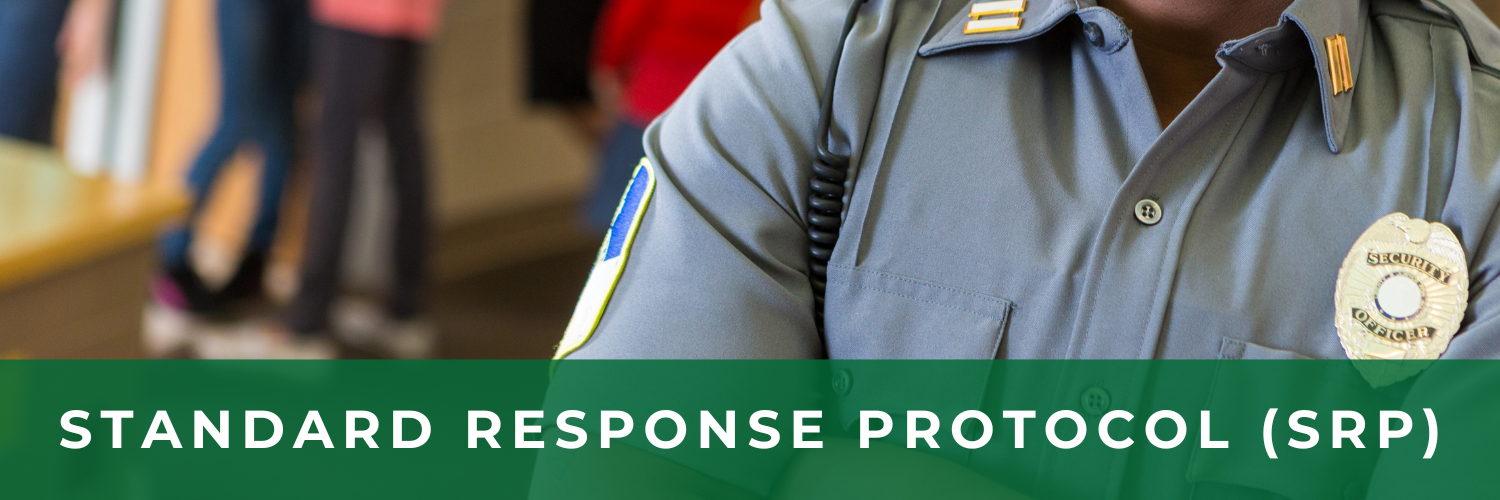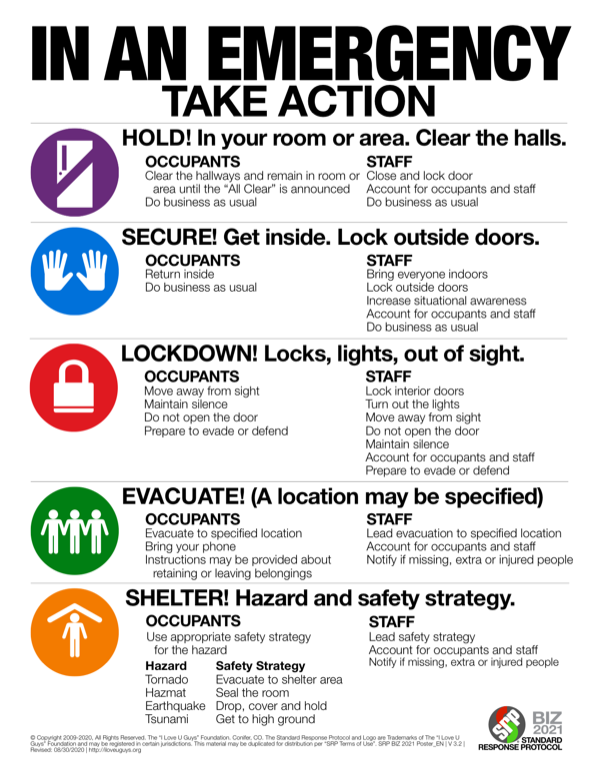- Taylor Independent School District
- Emergency Response
Safety & Security
Page Navigation
-

Taylor ISD administration and staff worked closely with the Taylor ISD Police Department, Taylor Police Department, Taylor Fire and Rescue, and neighboring districts reviewing our emergency preparedness plan. While Taylor ISD still has an extensive emergency preparedness plan in place that trains staff in safety and security for their campus, TISD has also adopted the Standard Response Protocol (SRP), “i love you guys,” which focuses on the classroom response to an incident at school.
The program is based on four actions that can be used in a variety of events. SRP standardizes the vocabulary so all stakeholders can understand the response and status of the event. For students, this provides continuity of expectations and actions throughout their educational career. For teachers, this becomes a simpler process to train and drill. For first responders, the common vocabulary and protocols establish a greater predictability that persists through the duration of an incident. Parents can easily understand the practices and can reinforce the protocol. Additionally, this protocol enables rapid response determination when an unforeseen event occurs, and allows for a more predictable series of actions as an event unfolds.
-
Hold
- Hold is called when there is a need for students and staff to hold one the current location.
- An announcement is made over the intercom system with necessary information shared.
-
Secure (Danger in the Area)
- Active threats, that do NOT involve imminent danger, we use a Secure Response.
- Students and staff are brought inside the building to use the physical building as a layer of protection. The outside doors are secured and monitored and business continues as normal inside the school building.
-
Lockdown (Active Threat)
- During an active threat situation, such as an active shooter-type attack, we use a Lockdown Response.
- Staff and students lock doors, turn off the lights and get out of sight.
- All staff are empowered to take action to protect themselves and others by using Avoid (get away from danger, Deny (block entry) and Defend (protect yourself and others).
-
Evacuation
- Evacuation is called when there is a need to move students from one location to another.
- Campus staff, with students, practice one evacuation drill each month.
- Evacuation includes:
- Activate a fire alarm
- Announcement over the school intercom system
-
Shelter
- Shelter is called when the need for personal protection is necessary.
- Understand the difference between a Tornado Watch and Warning.
- Tornado Watch: Conditions are right for a tornado. No immediate action necessary.
- Keep an “eye to the sky” and monitor local weather so appropriate action can occur if conditions worsen.
- Tornado Warning: A funnel cloud has been sighted. Take shelter in appropriate locations.
- Tornado Watch: Conditions are right for a tornado. No immediate action necessary.


